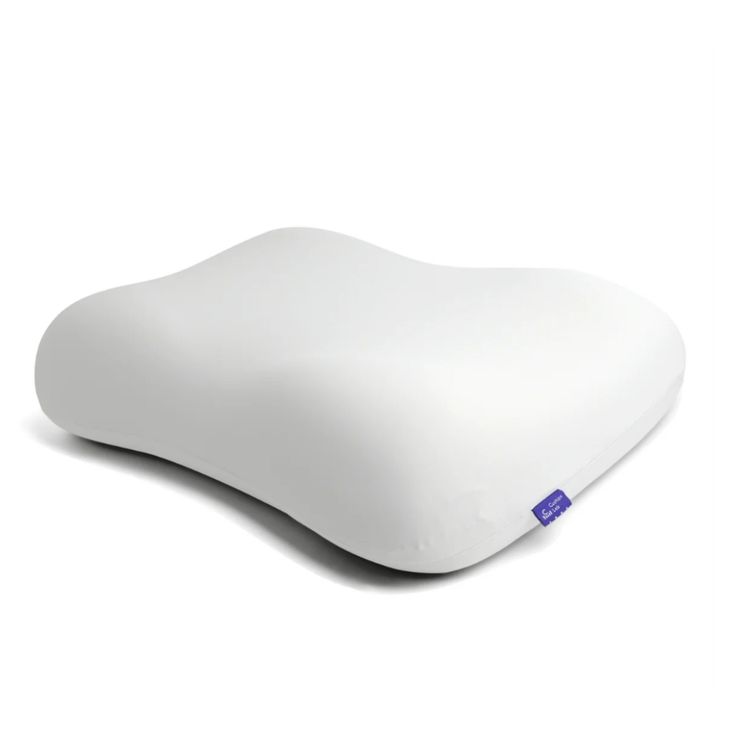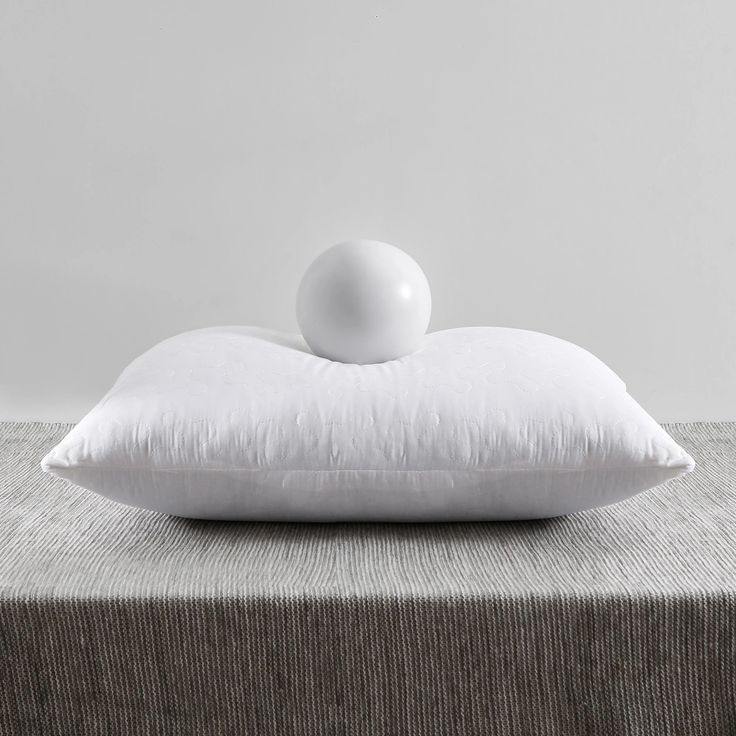When it comes to ensuring quality sleep, the importance of selecting the right pillow cannot be overstated. Among the myriad of options available in the market, understanding the standard pillow size is essential. The right pillow not only supports your head and neck but also plays a significant role in maintaining the natural alignment of your spine. Choosing the right height can be a daunting task due to the wide variety of pillow options available. This article aims to guide you through the considerations surrounding standard pillow sizes and why understanding the height matters.

Understanding Standard Pillow Size Dimensions
The standard pillow size typically measures 20 inches by 26 inches, which is suitable for most individuals and bed sizes. However, the dimensions alone do not dictate the appropriateness of a pillow for any given user. The thickness, or height, of a pillow plays a crucial role in ensuring proper alignment and comfort during sleep. For instance, while a thicker pillow may be deemed more supportive for some, it can lead to discomfort for others, particularly those who sleep on their stomachs. Thus, a standard pillow size is more than just its dimensions; it is also about finding the correct height that fits individual sleep needs.
When selecting a pillow, it is important to consider your preferred sleeping position. Side sleepers often require a firmer and taller pillow to fill the space between the head and shoulders, while back sleepers may benefit from a medium-height pillow that supports the natural curve of the cervical spine. Stomach sleepers, on the other hand, should opt for a lower profile pillow to prevent neck strain. Understanding the interplay between standard pillow size and height can lead you to a more satisfying sleep experience.
The Role of Sleep Position in Pillow Height Selection
As previously mentioned, your sleeping position largely influences the choice of pillow height. Choosing the right standard pillow size can make a world of difference in how well you sleep. Side sleepers, who make up a significant portion of the population, typically require a thicker pillow. This is because they need extra elevation to keep their head aligned with their spine, preventing any discomfort or strain on the neck.
For back sleepers, a medium height pillow is ideal for ensuring that the natural curvature of the cervical spine is maintained. The goal here is to provide enough support without forcing the head too far forward or letting it tilt back excessively. Conversely, stomach sleepers benefit from a low-profile pillow or no pillow at all. This helps to ensure that the neck remains in a neutral position, reducing the likelihood of waking up with stiffness or pain. Thus, understanding the relationship between standard pillow size and optimal height is key to achieving a restorative night’s sleep.

How Pillow Material Affects Height and Comfort
Different materials used to construct pillows can significantly affect both the height and comfort level. Common materials include memory foam, latex, down, and synthetic fills. Each offers unique variables, including loft and firmness, which can affect how the pillow supports your head and neck throughout the night.
Memory foam pillows are increasingly popular due to their ability to conform to the shape of the head and neck. This adaptability means that while these pillows may start out as a standard pillow size, their height can diminish as they contour to the sleeper’s body. Latex pillows provide a firm yet resilient structure, often coming in a medium height that serves well for most sleeping positions, especially for back and side sleepers. Down pillows, although soft and plush, can lose their loft over time, leading to reduced support and adding complexity to the height consideration. Therefore, know the materials involved can guide you to the best standard pillow size and height tailored to your needs.
The Impact of Pillow Height on Spinal Alignment
One of the most significant factors related to pillow height is spinal alignment. Sleep positions, along with the type of pillow you choose, play a pivotal role in positioning the spine in a healthy angle. When the spine is correctly aligned, it can reduce pressure points and prevent pain, both of which are critical for getting a good night’s sleep.
If the pillow is too high or too low, it can lead to misalignment. For instance, a pillow that is too thick for a back sleeper can cause the head to tilt forward unnaturally, leading to neck pain or stiffness upon waking. Similarly, a pillow that is too flat for side sleepers may leave the head unsupported, potentially causing issues in the shoulders or spine. Long-term misalignment can lead to chronic pain or discomfort, further complicating sleep quality. Therefore, paying careful attention to the standard pillow size and ensuring proper height is essential in maintaining proper spinal alignment.

Testing for the Right Pillow Height: Tips and Techniques
Testing for the right pillow height requires a bit of trial and error, but you can streamline the process with some simple guidelines. First, assess your sleeping position and consider what height range would best suit you. Once this is established, you can set out to test pillows within the standard pillow size that meet your criteria. Importantly, spend time lying down with each pillow in your typical sleep position.
If you’re a side sleeper, the pillow should fill the space between your neck and shoulder without elevating your head too high. Back sleepers should notice that their head maintains a neutral position, neither falling forward nor tilting backward. For stomach sleepers, it’s ideal if your head can rest comfortably without twisting your neck. You may also want to consider adjustable pillows, which allow you to add or remove filling to find your perfect fit within the standard pillow size. This versatility can facilitate a more personalized experience conducive to improved sleep quality.
The Importance of Pillow Replacement Timelines
Most pillows have a useful life that averages between 1 to 3 years, depending on the type of material and how often they are used. Regularly replacing your pillow is important for maintaining hygiene. It also ensures you have the adequate height and support you need for a good night’s sleep. Over time, even the best standard pillow size can lose its effectiveness through flattening or wear and tear.
It may be time to replace your pillow if you notice visible lumps or flat spots. Persistent neck or shoulder pain upon waking and excessive allergens can also indicate it’s time for a new pillow. To maintain optimal sleep health, regularly check your pillow. Make sure it still meets your needs for height and comfort. When choosing a new pillow, take the time to reassess your sleeping position. This will help ensure you find the best possible fit for restful sleep.

Common Misconceptions About Pillow Size and Height
Despite the abundance of information available, misconceptions about pillow size and height still circulate. A prevalent myth is that a larger pillow always equals better support. In reality, support is more about the pillow’s firmness and height rather than just its dimensions. A standard pillow size may work for many people. However, those with specific needs might find greater comfort and support with smaller or differently shaped pillows.
Another common myth pertains to the idea that one type of pillow is universally better than another. What works for one person may not work for another. This difference is due to variations in body types, sleeping positions, and personal preferences. When selecting your pillow, it is vital to consider your unique needs. Focus on the correct height, rather than just the standard pillow size, to ensure optimal comfort. Education and personal experience will go a long way in debunking these misconceptions and leading to a better sleep experience.
Finding Your Ideal Pillow: Recommendations Based on Needs
Choosing the right pillow can seem overwhelming, but it can be simplified by understanding your specific needs. For side sleepers, consider firm, high-loft pillows that maintain their shape and ensure proper alignment. Back sleepers, on the other hand, should opt for medium loft options that provide balanced support. Stomach sleepers would do best with soft, low-profile pillows that promote a neutral spine position.
Additionally, if you suffer from allergies, consider hypoallergenic materials that can be easier on your respiratory system. For individuals who often change positions during the night, adjustable pillows provide the perfect solution for personalized comfort. These pillows enable you to modify the height according to your needs, ensuring optimal support throughout your sleep. It’s crucial to remember that the best pillow fits your preferred standard pillow size. At the same time, it should address your specific comfort and support requirements for a restful night’s sleep.

Conclusion: Prioritizing Pillow Selection for Better Sleep
In conclusion, the selection of the right pillow is not just about the standard pillow size but also significantly concerning its height and comfort. Understanding how your sleep position, pillow material, and even periodic replacement schedules contribute to a restful night is paramount. Taking the time to identify your needs and preferences can help you select a pillow that maximizes comfort and support.
Quality sleep is a cornerstone of overall health and well-being, and the right pillow plays an invaluable role in achieving it. Given the wide variety of options available, it’s essential to make informed choices when selecting a pillow. Focus on finding the right height that complements the standard pillow size to enhance your sleep quality. By prioritizing your pillow selection, you pave the way for improved sleep quality and, ultimately, a better quality of life.



